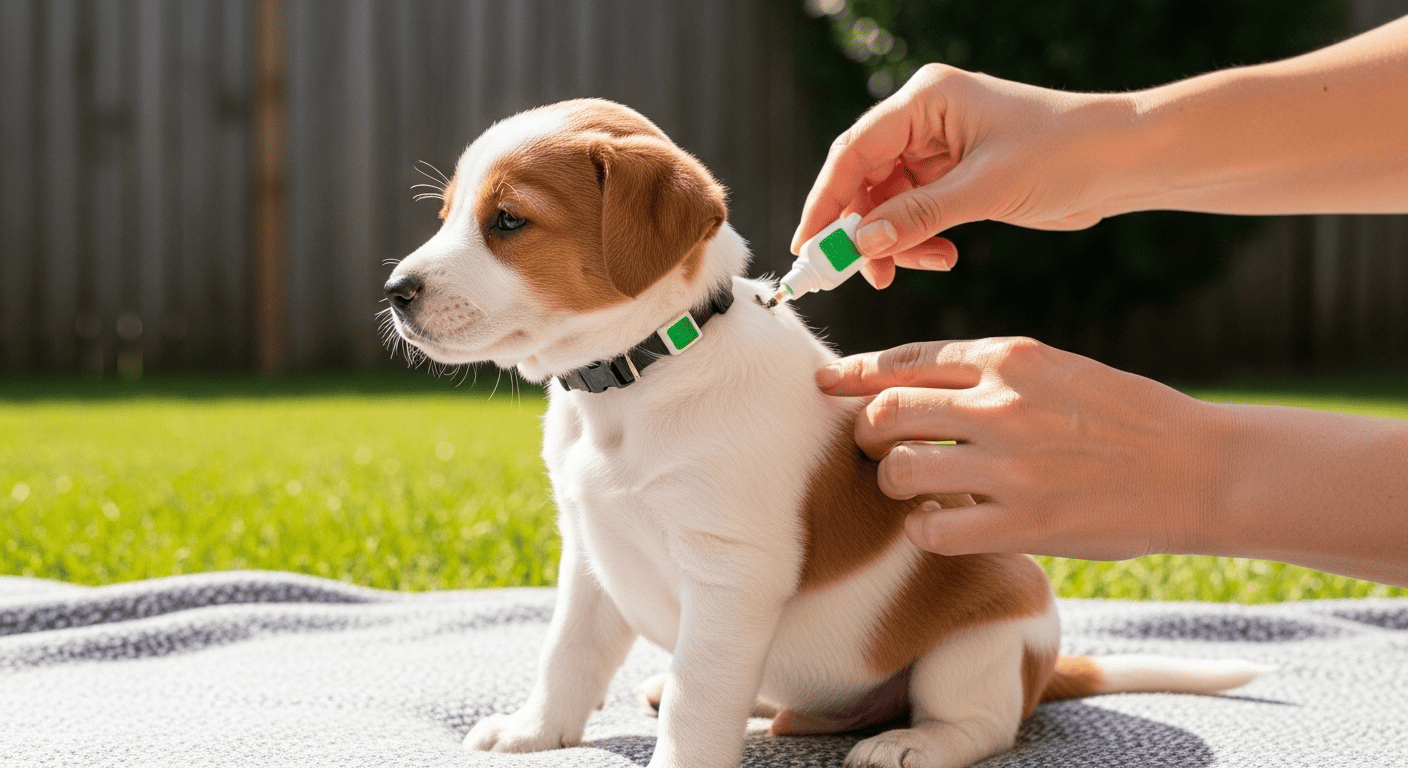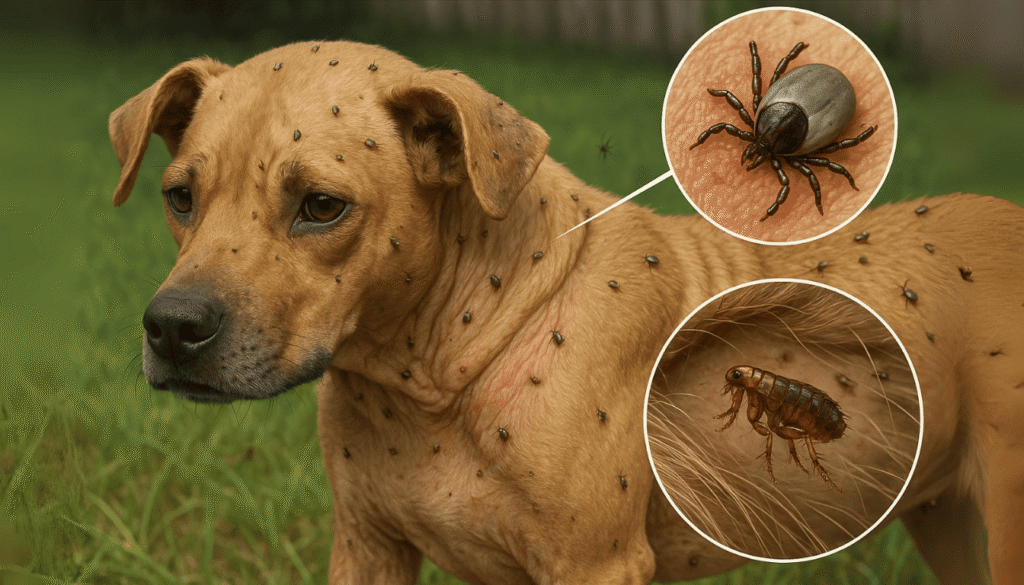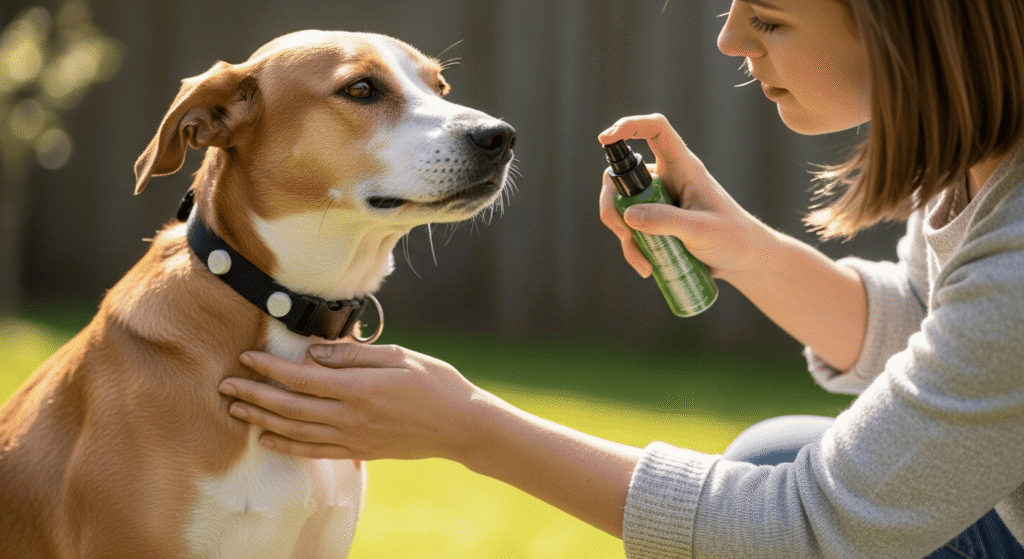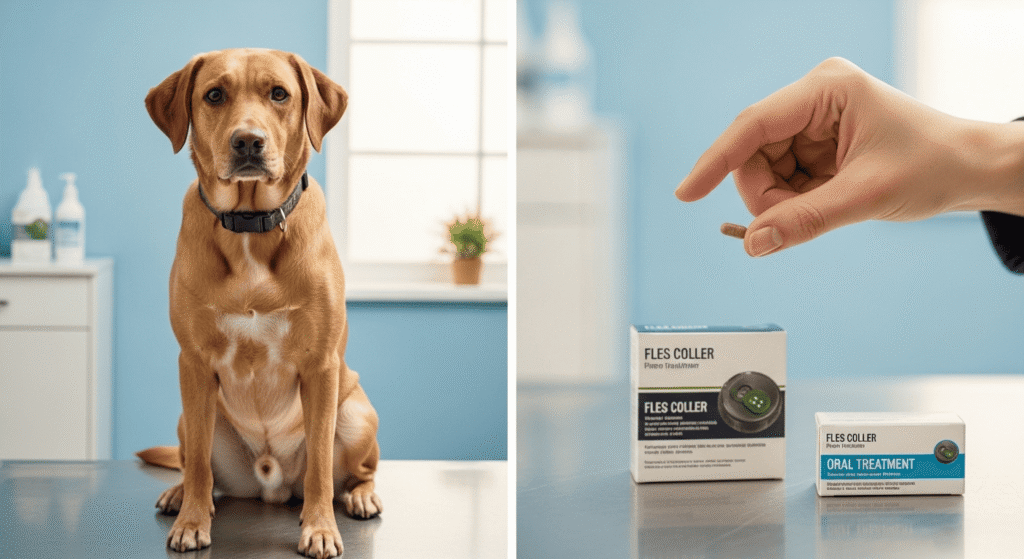As a first-time puppy owner, you’re likely eager to provide the best possible care for your little friend. Snuggles, playtime, and obedience training are all essential elements of puppyhood, but there is one important aspect of pet care not to overlook: flea and tick protection. These little buggers can bring on serious health issues for your puppy, including skin irritation, infection, and in extreme cases, such as Lyme disease and ehrlichiosis.
If you’ve been asking yourself, “How do I successfully keep fleas and ticks off my puppy?” you’re in the right place. In this ultimate guide, we’ll discuss everything you need to know about flea and tick prevention in puppies, from the top treatments and preventative measures to advice for keeping your puppy safe and happy.
Why Flea and Tick Prevention for Puppies is Important
Fleas and ticks are not just nuisance bugs; they are also potential health risks to your puppy. Recognizing the dangers they bring is the secret to effective prevention.
Fleas: A Hidden Threat
Fleas are small, parasitic insects that live on your puppy’s blood. Besides making your puppy scratch and uncomfortable, they can also transmit other parasites, such as tapeworms. Flea infestation can lead to flea allergy dermatitis, hair loss, and anemia, especially in puppies with weakened immune systems. Heavy infestation can even lead to life-threatening diseases.
Ticks: A Silent Health Risk
Ticks are more discreet in their behavior. You might not even notice a tick on your puppy, but such parasites can spread serious diseases like Lyme disease, Rocky Mountain spotted fever, and anaplasmosis. In puppies, all these infections will result in fever, lethargy, joint pain, and organ failure if left untreated. You need to keep ticks away to guarantee the long-term health of your puppy.
The Best Flea and Tick Prevention for Puppies
1. Veterinarian-Approved Flea and Tick Treatments
The most reliable way to protect your puppy from fleas and ticks is through the use of veterinarian-approved treatments. They come in different forms, namely topicals, oral medications, and flea collars. Each has strengths and weaknesses, according to the age, size, and general condition of your puppy.
Topical Treatments
Topical flea and tick preventatives are liquid medications you put directly on your puppy’s skin. They typically last a month and either kill or repel fleas and ticks. They are often simple to apply and extremely effective, but make sure to use a product that is specifically labeled as being safe for puppies because some products are only for adult dogs.
Oral Medications
Flea and tick medication in chewable tablet or pill form can be administered orally. These work systemically, entering your puppy’s bloodstream, so that your puppy’s bloodstream is toxic to ticks and fleas. Oral medication is sometimes easier to administer than topical medication, especially if your puppy has sensitive skin to topicals. They may not work as well to keep ticks off, though, as topicals.
Flea Collars
Flea collars are a simple, long-term solution for ticks and flea protection. Flea collars release chemicals that will kill or drive away parasites over a long period of time. Some flea collars provide protection for eight months, making them an affordable method of controlling ticks and fleas over a longer time. However, flea collars have to be used cautiously, as some flea collars might cause irritation or an allergic reaction on sensitive puppies.
2. Regular Checkups and Grooming
Prevention of fleas and ticks is not just a matter of using treatments—regular grooming of your puppy is also necessary for flea and tick prevention. Grooming removes any fleas or ticks that have attached themselves to your puppy’s skin and hair coat, and it gives you an opportunity to detect early infestation signs.
Brushing Your Puppy’s Coat
Brush your puppy’s fur regularly to remove dirt, dirt and debris, and any pests lurking beneath. A fine-tooth comb will enable you to spot fleas more readily, especially in the areas around the neck, ears, and abdomen.
Tick Checks After Outdoor Play
If your puppy enjoys playing outdoors, particularly in grass or woods, it is a habit you should develop to check for ticks after every excursion. Ticks will burrow in your puppy’s coat and hide out until they transmit disease. Get rid of ticks with a tick removal tool and slowly pull out the whole tick without leaving parts behind.
Bathing Your Puppy
Bathing your puppy with a flea and tick shampoo can eliminate the pests in their fur. This will not prevent future infestations, but it can reduce the number of fleas or ticks on your puppy in the short term.
3. Flea-Free Environment for Your Puppy
Flea prevention extends beyond the body of your puppy—cleaning their environment is equally important. Fleas can inhabit your house, especially where your puppy tends to spend most of their time.
Vacuuming Regularly
Flea eggs and larvae can also inhabit carpets, rugs, and upholstery. Regular vacuuming will minimize the number of flea eggs and larvae in your home, therefore preventing infestation. Dump the vacuum bag or empty the canister after vacuuming.
Washing Bedding and Toys
Wash your puppy’s bedding, toys, and blankets in hot water every day. This will destroy any fleas or ticks that may be infesting their valuable items. If your puppy also sleeps in a kennel or crate, make sure to clean these regularly so as not to let fleas lay eggs.
4. Use Natural Flea and Tick Repellents
For those who want a more natural solution, various natural remedies are available to repel fleas and ticks. Natural remedies should be kept in mind that they may not give protection as strong as veterinarian-approved medications.
Essential Oils
Some of the essential oils, like lavender, eucalyptus, and citronella, repel fleas and ticks. Diluting these essential oils and applying them on your puppy’s fur can eliminate the chances of infestation. Some essential oils, however, are toxic to puppies and must be used with extreme caution. Always refer to your veterinarian before applying essential oils to your puppy.
Apple Cider Vinegar
A diluted apple cider vinegar solution with water can be sprayed over your puppy’s coat to repel ticks and fleas. It is nontoxic and harmless, making it a suitable treatment to use as a gentle treatment on young puppies.
Diatomaceous Earth
Food-grade diatomaceous earth is a safe, natural substance that can be sprinkled on your puppy’s fur and bedding. They will kill and dehydrate fleas and ticks, without chemicals. Ensure the product is food-grade and pet-safe.
5. Stay Vigilant with Vet Checkups
Puppy flea and tick prevention involve regular vet visits. Your vet will help you choose the most effective flea and tick preventives for your puppy based on breed, age, and medical history.
Regular vet visits also allow for early detection of flea or tick infestation and treatment before the condition gets worse.
Frequently Asked Questions About Flea and Tick Prevention for Puppies
Q1: How old does my puppy need to be before flea and tick prevention can begin?
Puppies can begin flea and tick prevention as early as 8 weeks of age, but be sure to check with your veterinarian to ensure the product is appropriate for your puppy’s age.
Q2: Will flea and tick prevention kill my puppy?
Although all veterinary-approved flea and tick preventatives are generally safe, side effects can occur in some puppies. Watch your puppy at all times for signs of discomfort or irritation and contact your vet if you are worried.
Q3: How frequently should I treat fleas and ticks?
Most flea and tick treatments need to be applied every 30 days, but the time may be more frequent depending on the treatment. Use the product’s instructions or the advice of your vet.
Q4: Do natural remedies work for flea and tick prevention?
Natural remedies such as essential oils and apple cider vinegar can repel fleas and ticks, but they are generally less potent than treatments that have been vetted by a veterinarian. Ask your vet to see what will work best for your puppy.
Puppy flea and tick prevention is an essential aspect of being a responsible pet owner. With a proper mix of effective treatments, regular grooming, cleanliness, and visits to the vet, you can keep your puppy safe from these destructive parasites. Be sure to have your veterinarian assist you in developing the best prevention plan for your puppy based on its specific needs.
By taking the proper steps, your puppy can live happily, healthily, and parasite-free.
If you’ve found this guide useful, be sure to share it with other puppy owners and continue to be proactive in protecting your furry friend from fleas and ticks!
Yuns Legdm is a passionate advocate for pet care and the founder of this website, dedicated to providing valuable information for fellow pet lovers and veterinary professionals worldwide. With a deep love for animals, Yuns created this platform to connect passionate pet owners with expert insights from veterinarians around the globe.
This website grows with you—the passionate pet owners and veterinary experts—creating a trusted space where knowledge, experience, and love for animals come together. Whether you’re seeking advice on pet health, nutrition, or general well-being, this platform is here to support you on your journey of responsible and loving pet care.





